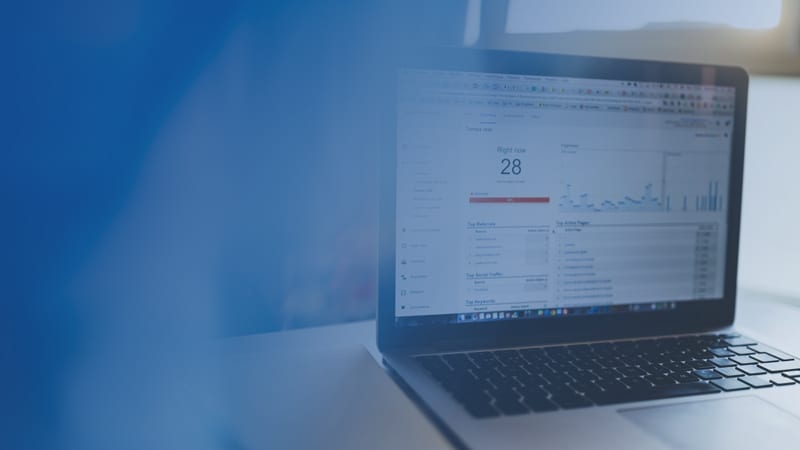Financial Planning & Analysis (FP&A) plays a crucial role as a strategic partner to the business, utilizing financial analysis and forecasting to help guide decision-making. Their responsibilities include drafting budgets and forecasts, optimizing the company’s return on investment, and furnishing the executive team and board of directors with insights to drive action. All of this strategic planning requires data, and the data gathered from lease accounting enables the FP&A team to refine the organization’s financial strategy, thereby improving the decision-making process.
Lease Accounting Data for FP&A
Lease accounting software can be a treasure trove of insights offering significant value beyond the accounting department. With information that goes well beyond the rudimentary tracking of rental payments, lease accounting data encapsulates the comprehensive financial impact of lease agreements and their underlying assets.
Here’s what the FP&A team can find in their lease accounting data:
Total Value of Lease Obligations
This is the crux of lease accounting – understanding the total future lease payment obligations. This number supports the FP&A team in crafting financial forecasts and models that account for long-term commitments, ensuring the organization stays on a steady financial course.
Lease Terms, Renewals, and Clauses
Knowing the specifics of lease terms is vital for accurate financial projections. Renewal, escalation, and termination clauses can significantly impact future cash flows but aren’t captured in a cursory review of the monthly payments. Accessing this data via a lease accounting system helps FP&A teams build more accurate forecasts without tedious contract review.
Lease Expenses Beyond Rental Payments
Speaking of items not captured in monthly rental figures, aspects such as upfront payments, service and maintenance costs, taxes, and insurance must be included in the lease accounting expense analysis. From an FP&A perspective, these variables can lead to a reevaluation of cost structures and operational efficiencies.
Asset Value and Depreciation Schedules
Understanding the value of leased assets and their corresponding depreciation schedules is essential for comprehensive balance sheet analysis. It reveals the long-term financial implications and impacts of owned versus leased assets.
Use Cases for the FP&A Team
How can the FP&A team best utilize the lease accounting data at their disposal? By incorporating it into the work they are already doing. Lease accounting data can make common FP&A tasks easier and the results more accurate.
Forecasting and Budgeting
Simplify the budgeting and forecasting process by using the lease data already gathered for you in the lease accounting process. In addition to saving you a data gathering step, this pre-vetted data will ensure lease-related expenses are appropriately captured. This improves the accuracy of your budgets and financial forecasts and also enables proactive management of future cash flows and profitability.
Scenario Planning and Sensitivity Analysis
With all your lease data in one place, it is much easier to create multiple ‘what-if’ scenarios and conduct sensitivity analyses to see how changes in lease terms can impact the company’s financial outcomes. This scenario planning may have been too time consuming or tedious to conduct in the past. But with the data pre-gathered and cleaned for you, you can refine strategic decision-making around leasing and more by conducting analysis that shows the range of potential financial impacts.
Strategic Business Planning
As mentioned above, lease accounting data can be used in multiple kinds of financial analysis including forecasting, scenario planning, and sensitivity analysis. Since the long-term financial implications of lease decisions can directly influence the strategic direction of the company, these analyses should be used to inform strategic business planning. Beyond decisions around location expansion or consolidation, lease data can also inform lease-vs-buy decisions and other capital allocation questions.
Capital Allocation
The new lease accounting rules that brought you more transparent lease accounting data were designed to bring leases onto the balance sheet. This quantification of lease liabilities on the balance sheet can affect the company’s overall capital allocation strategy. By leveraging lease accounting data to understand the impact of lease obligations, the FP&A team can provide valuable insights into investment decisions such as lease vs buy and capital structure management.
Getting the Most from Your Lease Accounting Data
To ensure FP&A fully capitalizes on lease accounting data, it’s essential to follow best practices that streamline the process and enhance analytical capabilities:
Implement Purpose-Built Lease Accounting Software
Manual lease accounting processes such as spreadsheets or homegrown systems are often difficult to interpret for those who did not design them and more prone to human error. Additionally they do not automatically update with changes to the accounting standards. This can make data difficult to access and at times unreliable.
Adopting advanced lease accounting software can standardize and automate data collection, making it easier to access, manage, interpret, and analyze lease information. Lease accounting software makes getting the data you need as easy as exporting a report, and its controls ensure the accuracy that provides a reliable foundation for financial analysis.
Cross-Functional Collaboration
Effective use of lease accounting data requires collaboration between FP&A, accounting, legal, real estate, and operations. The accounting team is key to keeping FP&A abreast of the latest lease accounting standards and their impact, which can help the FP&A team better extract and interpret valuable insights from lease data. A cross-functional approach fosters a shared understanding of the data’s implications and encourages a holistic view of the business’s financial health.
Regular Review and Analysis
Rather than a one-and-done exercise, lease accounting is an on-going practice. The same should be true of lease data analysis by the FP&A team. Regular reviews enable the team to spot trends, identify outliers, and adjust forecasts in a timely manner as market conditions and business needs change.
Conclusion
Lease accounting data isn’t just for the accounting team. It’s a great resource for FP&A to use for shaping financial strategies, supporting business decisions, and optimizing long-term planning. By understanding what information is available and how to extract its full worth, the FP&A team can ensure lease accounting data is leveraged to its maximum potential, propelling the organization toward its financial objectives.











